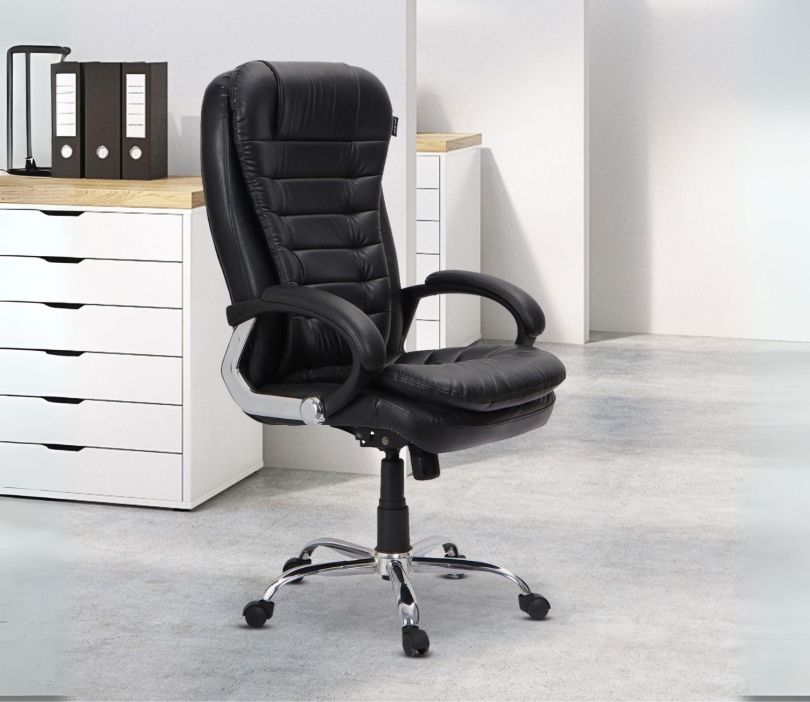Choosing the right chair for office use is more than just selecting a seat—it’s about investing in your health, productivity, and daily comfort. Whether you’re furnishing a corporate setting or setting up a home office, the right office chair plays a critical role in maintaining posture, reducing fatigue, and enhancing overall work performance. Here’s a comprehensive guide on what to look for before purchasing your next office chair.

1. Ergonomic Design for Comfort and Posture
The term ergonomic is not just a buzzword—it defines how a chair supports your body. An ergonomic chair encourages proper spine alignment, provides lumbar support, and adapts to your posture throughout the day. Look for features such as:
- Adjustable seat height and depth
- Contoured backrest with lumbar support
- Tilt tension control and recline lock
- Seat cushioning that reduces pressure on hips and thighs
These features are essential for anyone spending long hours at a desk.
2. Adjustability Is Key
No two bodies are the same. A good chair for office use should offer multiple points of adjustment. Check if the chair allows you to:
- Raise/lower the seat
- Move the armrests up/down and sideways
- Adjust the headrest (if included)
- Modify lumbar support depth
A fully adjustable chair ensures better customization to your body’s dimensions, minimizing the risk of discomfort or repetitive strain injuries.
3. Material and Build Quality
Materials directly impact comfort, durability, and aesthetics. Common options include:
- Mesh chairs: Promote airflow, ideal for warmer climates or prolonged use
- Fabric chairs: Comfortable and available in various colors, but may require more maintenance
- Leather or faux leather chairs: Offer a premium look and feel but may not be as breathable
Choose a material based on your workspace environment and maintenance preference.
4. Mobility and Base Support
Mobility enhances efficiency. A 360-degree swivel base with smooth-rolling casters allows you to move easily between tasks. Look for:
- A sturdy five-point base for stability
- Dual-wheel casters for both hard floors and carpets
- Heavy-duty materials like steel or aluminum in the frame
The right base ensures both freedom of movement and long-term durability.
5. Weight Capacity and Chair Size
Ensure the chair supports the user’s weight comfortably. Most standard office chair support up to 250 lbs, but there are also heavy-duty chairs designed for higher weight capacities. Additionally, consider the seat width and depth to match the user’s build.
6. Style and Aesthetic Compatibility
Function is essential, but so is form. Your chair should complement your office décor. Whether you prefer minimalist mesh, classic leather, or contemporary fabric finishes, select a design that blends well with the rest of your workspace.
7. Price vs. Value
While budget constraints are real, an office chair is a long-term investment in your well-being. Cheaper chairs may lack proper support or wear out quickly. Look for trusted brands and read customer reviews to ensure you get value for your money.
8. Warranty and After-Sales Support
A good office chair should come with a warranty that covers parts like the base, wheels, or hydraulic system. This reflects the manufacturer’s confidence in the product’s quality and offers you peace of mind.
Final Thoughts
When selecting a chair for office use, prioritize ergonomics, adjustability, and build quality. A well-designed office chair not only boosts productivity but also safeguards your health. Whether you’re working from home or setting up a new corporate environment, make your choice wisely—it’s an investment you’ll feel every day.